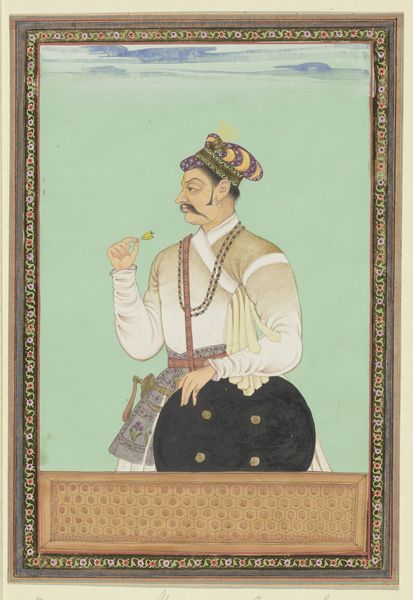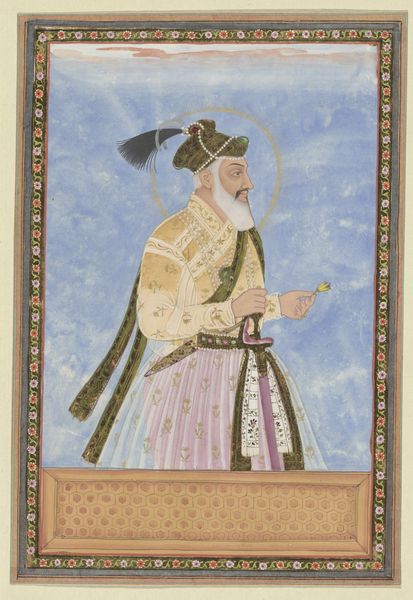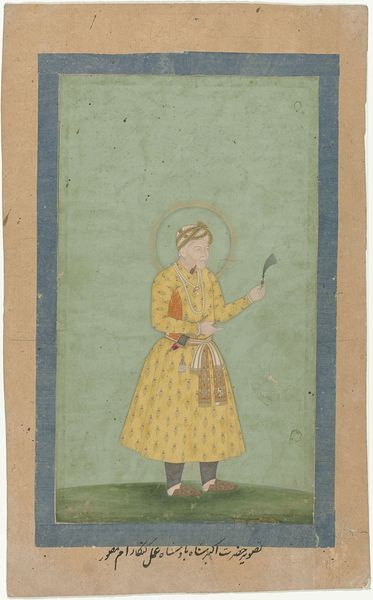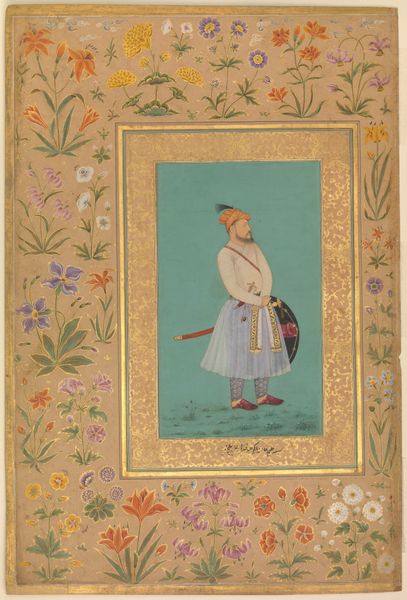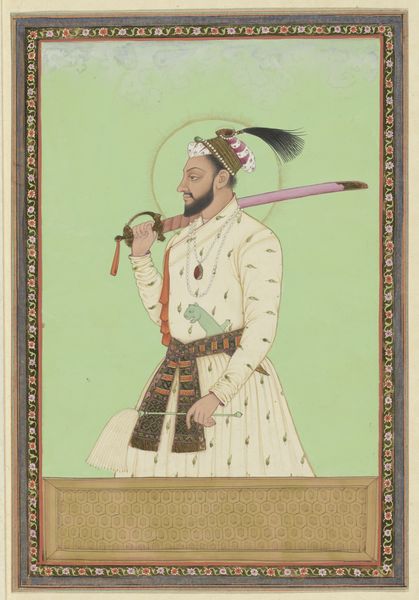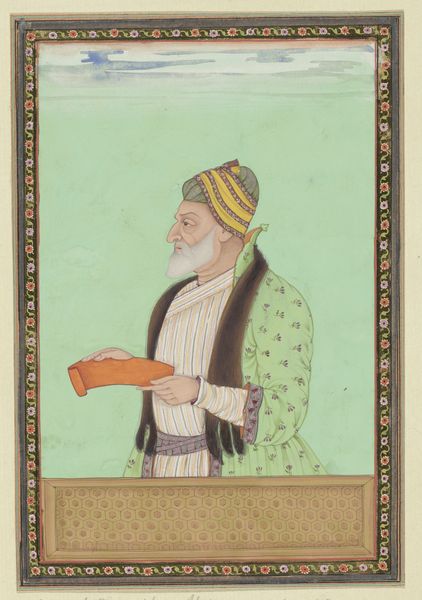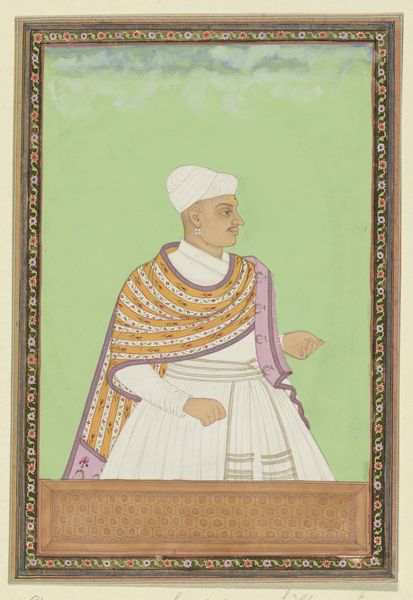
Portret van Akbar Padshah, de zoon van Humayun, die na zijn vader regeerde in Hindustan c. 1686
0:00
0:00
painting, watercolor
#
portrait
#
water colours
#
painting
#
asian-art
#
figuration
#
watercolor
#
islamic-art
#
watercolour illustration
#
miniature
#
watercolor
Dimensions: height 203 mm, width 140 mm
Copyright: Rijks Museum: Open Domain
Curator: This watercolor portrait from around 1686, currently residing at the Rijksmuseum, depicts Akbar Padshah, son of Humayun, who ruled in Hindustan after his father. Editor: Hmm, there's a peculiar blend of melancholy and majesty, don't you think? The softness of the watercolor lends a dreamlike quality, and the muted palette, almost feels like looking through faded memories. Curator: That's a beautiful observation. This type of Mughal painting emerged at a critical juncture in South Asian history, solidifying dynastic power and crafting visual narratives of rulership. Consider how the figure is rendered – idealized yet seemingly weighed down. Editor: Absolutely! It's like the artist is hinting at the burdens of leadership. Holding that tiny white flower in contrast to that enormous sword. A tension between peace and power. Was that sword always with him, or just brought out for official portraits, I wonder. Curator: Mughal portraiture frequently uses objects like swords and flowers to subtly convey attributes. The flower, purity or humility perhaps? It's always important to examine these carefully, as such works served multiple purposes. While memorializing the ruler, the painting would have been powerful propaganda too. Editor: It makes me wonder about his inner life... what dreams he held, what kept him awake at night. And looking closer I wonder if the artist had ever seen him or used sketches of the royal figure to help produce this piece of propaganda, as you describe it. Curator: I agree, there is something incredibly compelling about the human element embedded within these historical documents, miniature works of art that offer us such a rich context to study. It is important to remember the artist as an important actor in this painting too! Editor: This painting makes me want to understand how history and mythology can be creatively combined, in our time, in the 21st century... not as a ruler but as a portrait of a human, just sitting and holding flowers, what images would people construct now? Curator: Food for thought indeed. Thinking about these portraits also as conceptual bridges connecting past and future artistic practices is a wonderful path. Editor: Absolutely, thanks for bringing this work to light for our listeners today.
Comments
No comments
Be the first to comment and join the conversation on the ultimate creative platform.


